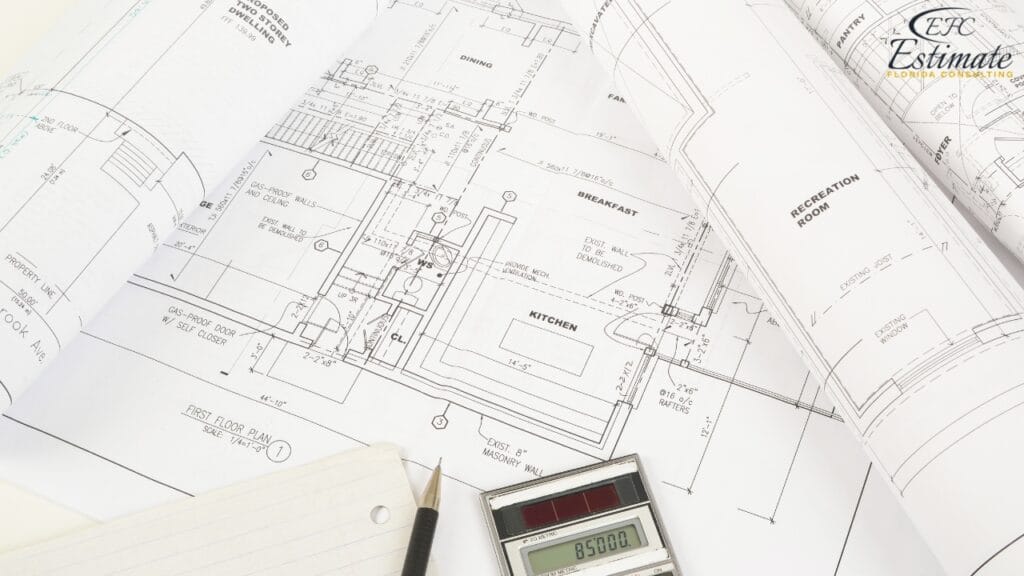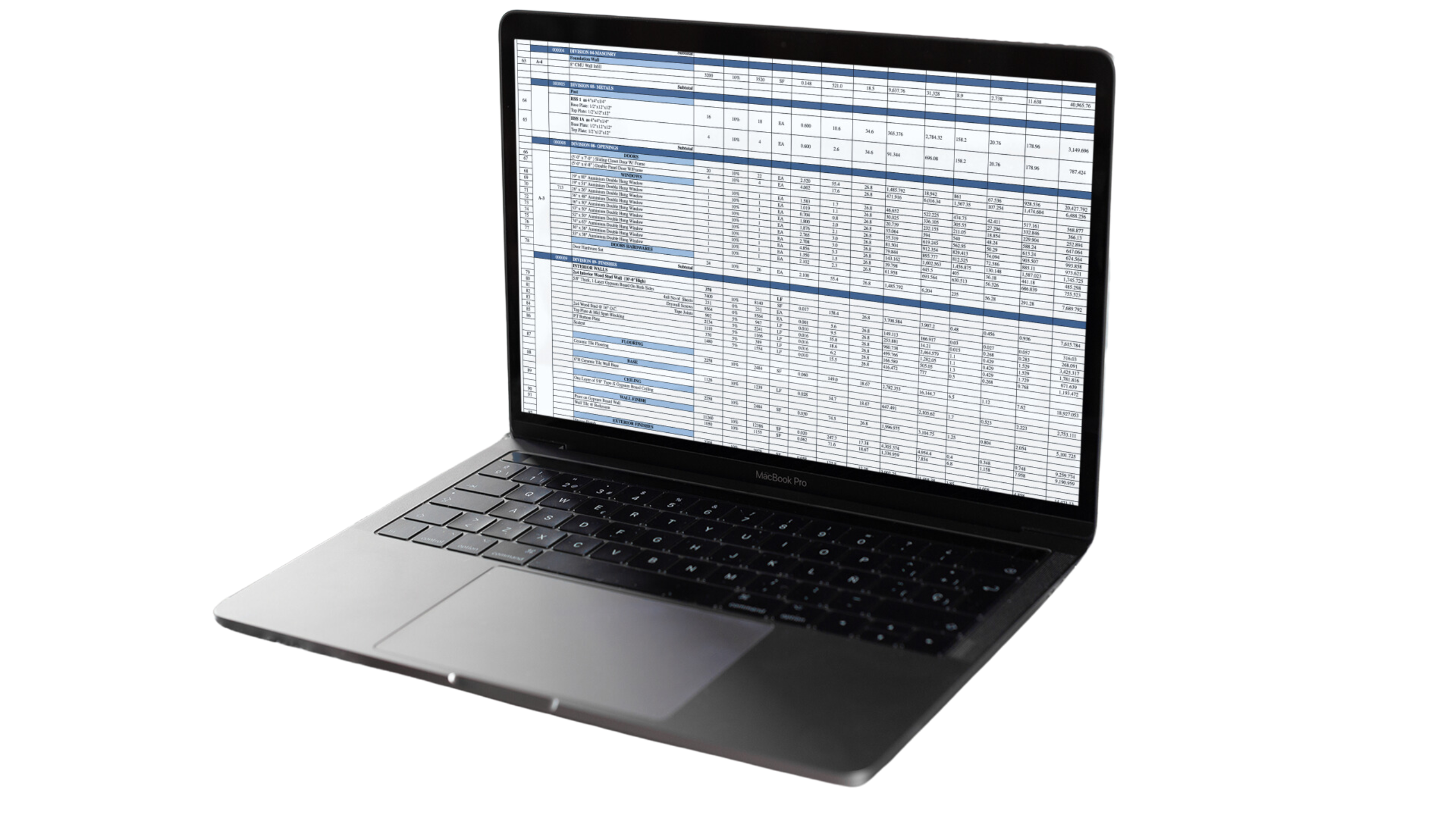90% More Chances to Win Projects With Our Estimate!
- Multi-Family Building
- Hotel Building
- Hospital Building
- Warehouse Building
- School & University Building
- High-Rise Building
- Shopping Complex
- Data Center Building

Estimating project costs accurately is a crucial step in ensuring the success of any construction endeavor. Whether you are a general contractor, subcontractor, developer, or homeowner, understanding how to estimate costs can help you make informed decisions and keep your projects on budget. In this guide, we will explore the essential steps in estimating project costs, the factors that influence costs, and the tools and techniques available to help you achieve precise estimates. This blog is brought to you by Estimate Florida Consulting, your trusted partner for accurate construction estimates in Florida.

Clearly defining the project scope is essential. This includes outlining the work to be done, materials required, and desired timelines. A well-defined scope reduces the risk of scope creep, which can lead to unexpected costs.
Collect accurate cost data for materials, labor, equipment, and overhead. Here’s how to gather this data effectively:
Use the gathered data to create a detailed cost estimate. The estimate should include:
Here’s an example calculation for direct costs. Assume your direct costs (labor + materials) initially totaled $50,000:
Revised Direct Costs=Original Direct Costs+(Original Direct Costs×0.30) = $50,000 + ($50,000 × 0.30) = $50,000 + $15,000 = $65,000
= $50,000+($50,000×0.30)=$50,000+$15,000=$65,000
Don’t forget to account for overhead costs and desired profit margins.
If your total revised direct costs are now $65,000, with overhead at 15% and a desired profit margin of 20%, your calculation would look like this:
Total Estimate = Direct Costs (Direct Costs×Overhead Percentage)+(Direct Costs×Profit Margin) = $65,000 + ($65,000 × 0.15) + ($65,000 × 0.20)
=$65,000+($65,000×0.15)+($65,000×0.20)
= $65,000 + $9,750 + $13,000 = $87,750 = $65,000+$9,750+$13,000=$87,750
After calculating costs, review your estimate for accuracy:
Understanding the key factors that influence project costs is essential for accurate estimation. Here are the most significant aspects to consider:
Utilizing the right tools can streamline the estimation process and improve accuracy. Consider the following options:
Avoiding common mistakes can significantly enhance the accuracy of your estimates. Key pitfalls include:

Cost estimation is the process of predicting the overall cost of a construction project based on various factors, including materials, labor, overhead, and profit margins. Accurate estimates are essential for budget planning, securing financing, and ensuring project viability.
Accurate cost estimation can significantly impact project success. Here’s why:

Here are some best practices to enhance the accuracy of your project cost estimates:
In today’s fast-paced construction environment, leveraging technology can greatly enhance your cost estimation process. Various software tools are available that can help streamline the estimating process, improve accuracy, and save time.
Utilizing these technologies can lead to more accurate estimates, ultimately saving time and money on your projects.

Accurate project cost estimation is fundamental to the success of construction projects in Florida. By understanding the factors that influence costs, following a structured estimation process, and utilizing available tools, you can create reliable estimates that enhance your project’s chances of staying on budget. Whether you are a contractor or a homeowner, honing your estimating skills will pay dividends in the form of successful projects and satisfied clients. At Estimate Florida Consulting, we are committed to helping you navigate the complexities of cost estimation, ensuring your projects thrive.
Project cost estimation is the process of predicting the total costs involved in a construction project. It includes calculating costs for labor, materials, equipment, permits, overhead, and profit margins to provide a clear budget for project execution.
Accurate cost estimation ensures that your project stays within budget, facilitates effective project planning, and reduces financial risk. It also gives you a competitive edge when bidding on projects, as clients prefer contractors with precise and reliable estimates.
Major factors include:
Some popular tools include:
Overhead is typically between 10% to 20% of the total direct costs. You can calculate it by adding up all indirect costs and dividing by the total project cost. Profit margins generally range from 10% to 25%, depending on industry standards and business goals.
At Estimate Florida Consulting, we offer detailed cost estimates across all major trades, ensuring no part of your project is overlooked. From the foundation to the finishing touches, our trade-specific estimates provide you with a complete and accurate breakdown of costs for any type of construction project.

We take pride in delivering accurate, timely, and reliable estimates that help contractors and builders win more projects. Our clients consistently praise our attention to detail, fast turnaround times, and the positive impact our estimates have on their businesses.
Estimate Florida Consulting has helped us win more bids with their fast and accurate estimates. We trust them for every project!

Submit your project plans, blueprints, or relevant documents through our online form or via email.
We’ll review your project details and send you a quote based on your scope and requirements.
Confirm the details and finalize any adjustments to ensure the estimate meets your project needs.
Receive your detailed, trade-specific estimate within 1-2 business days, ready for your project execution.

561-530-2845
info@estimatorflorida.com
Address
5245 Wiles Rd Apt 3-102 St. Pete Beach, FL 33073 United States
561-530-2845
info@estimatorflorida.com
Address
5245 Wiles Rd Apt 3-102 St. Pete Beach, FL 33073 United States
All copyright © Reserved | Designed By V Marketing Media | Disclaimer